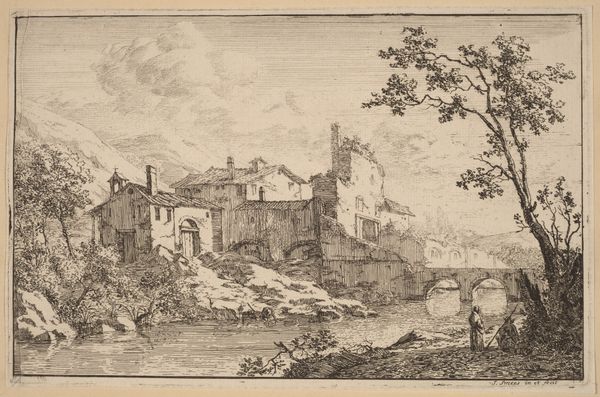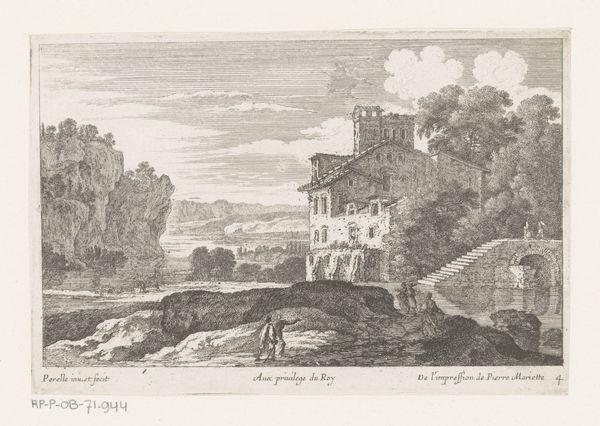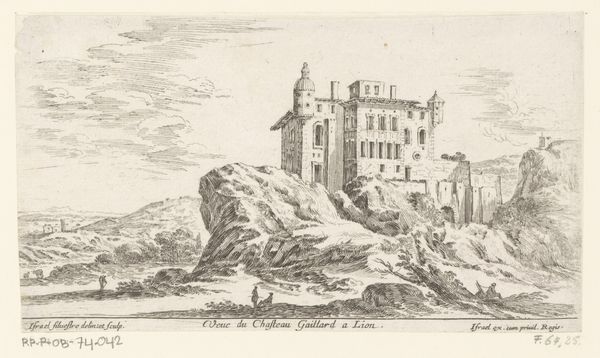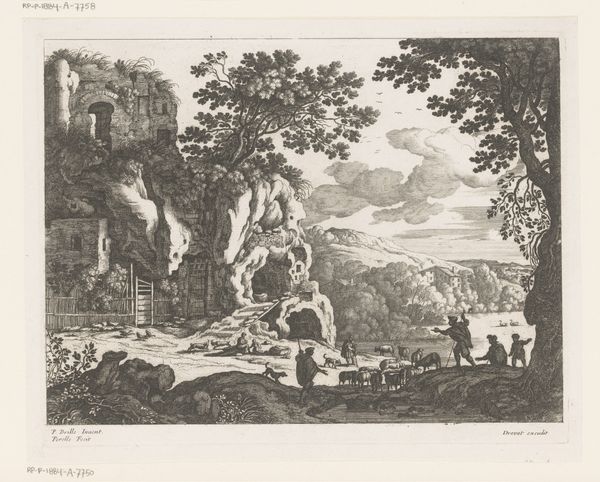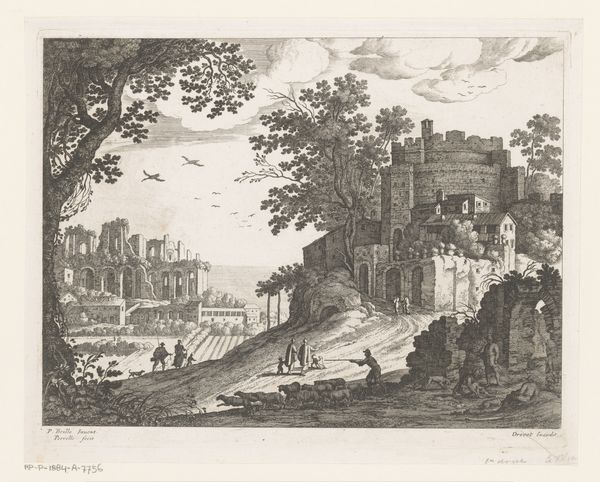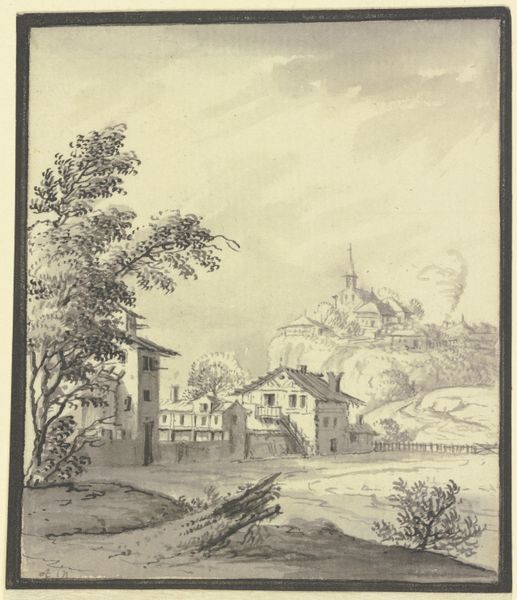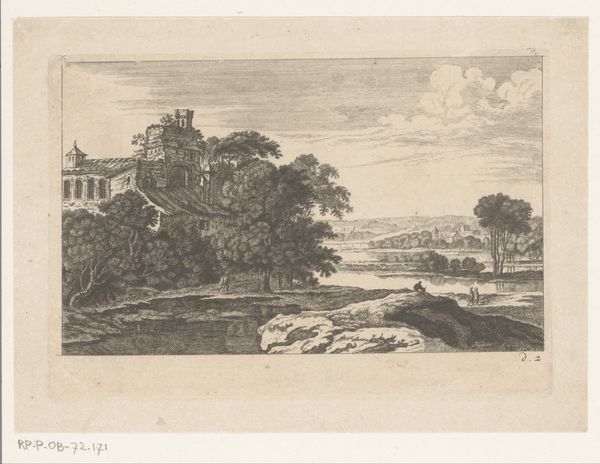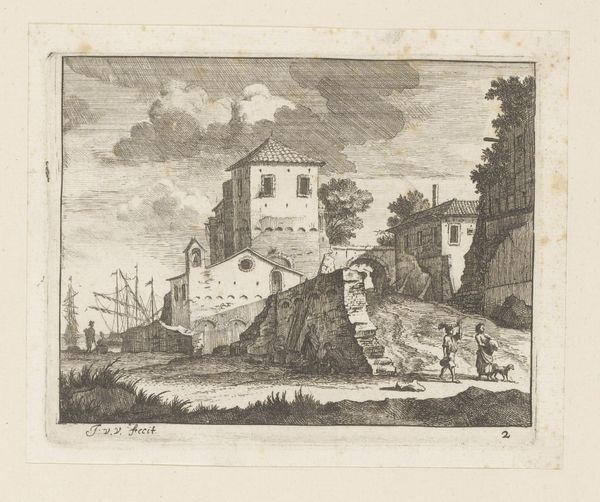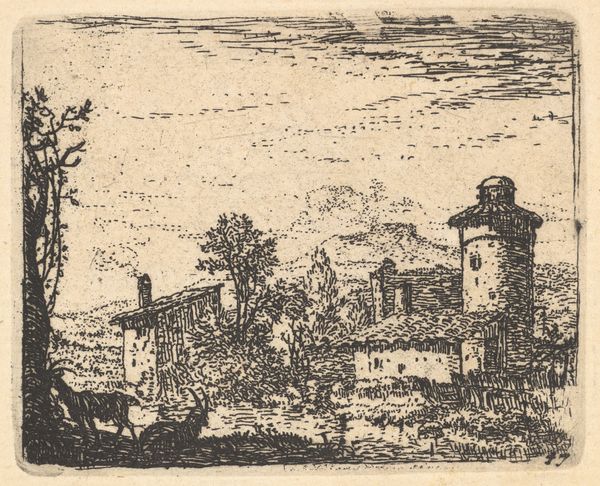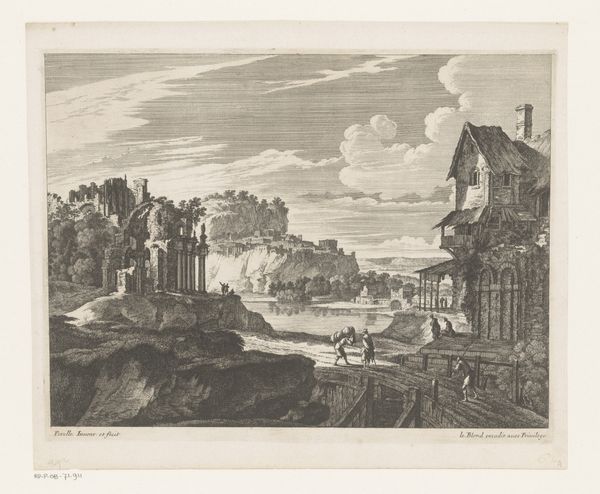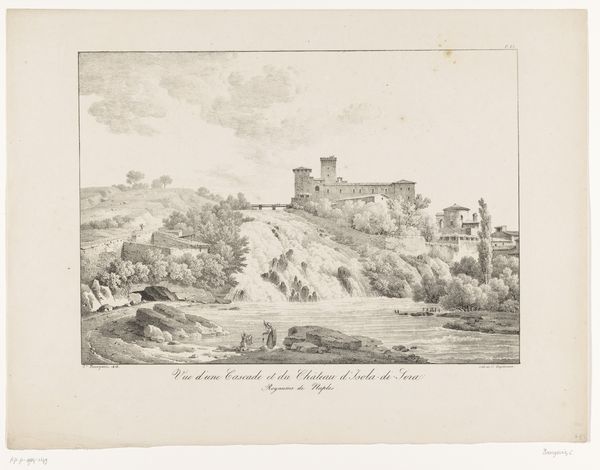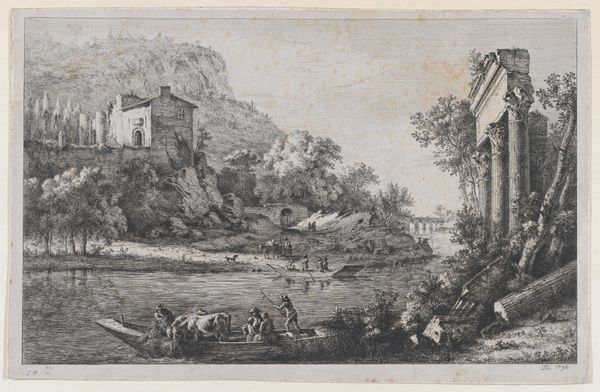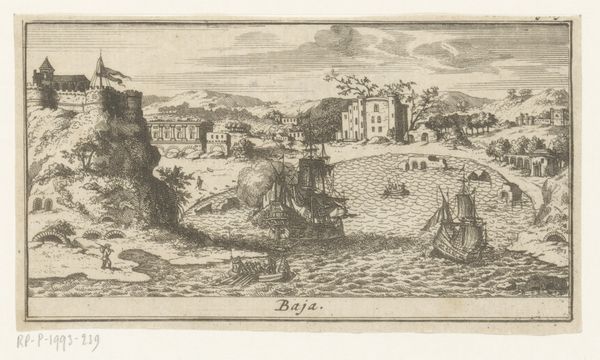
print, engraving
#
toned paper
#
light pencil work
#
baroque
# print
#
pen sketch
#
pencil sketch
#
old engraving style
#
landscape
#
personal sketchbook
#
pen-ink sketch
#
pen work
#
sketchbook drawing
#
cityscape
#
sketchbook art
#
engraving
Dimensions: height 132 mm, width 186 mm
Copyright: Rijks Museum: Open Domain
Editor: This is "Villa met trap aan water," or "Villa with Steps by the Water," an engraving by Nicolas Perelle, made sometime between 1628 and 1679. It’s currently held at the Rijksmuseum. It has such a quiet, contemplative mood for me, maybe even a bit melancholic. How do you interpret this work? Curator: What strikes me is how Perelle uses architecture not just as structure, but as a witness to historical shifts. The villa, partially in ruins, becomes a symbol of changing power dynamics. It prompts us to think about who had access to such opulent spaces and what implications arise from their partial abandonment. Notice how nature seems to reclaim the space – are those human figures strolling or displaced? What stories do you think they carry with them? Editor: It’s interesting to consider the human figures in that context, almost dwarfed by the architecture and landscape. They seem less like residents and more like temporary inhabitants or even wanderers. Is Perelle making a statement about the ephemerality of human achievement against the backdrop of time and nature? Curator: Precisely! And beyond that, consider the socioeconomic implications. The ruins could symbolize the decline of a certain class or the rise of another. How does the contrast between the ruined villa and the lively figures along the water invite questions about privilege and survival? Are we invited to consider a critique of power? Editor: That adds another layer to the image that I hadn't initially considered. I was drawn to its aesthetic appeal, but now I'm thinking about the historical and social forces that might be at play here. Curator: It's about questioning whose stories get told and whose get erased. Art becomes a vehicle for interrogating historical narratives, don't you think? Editor: Absolutely. It is a great starting point to encourage people to think critically. Thanks for opening my eyes to this new perspective! Curator: My pleasure. I’m taking something away from it too, especially considering the role of spectatorship within art and life.
Comments
No comments
Be the first to comment and join the conversation on the ultimate creative platform.
